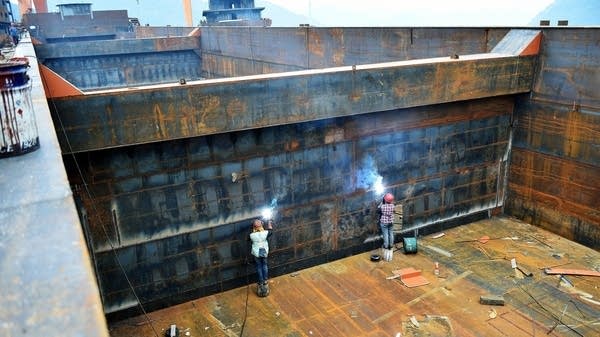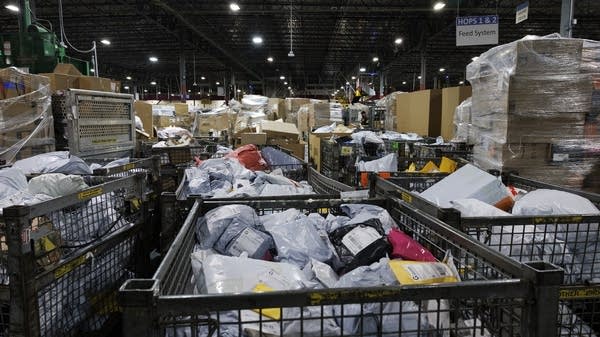American shipbuilding foundered in the last century. Will a bipartisan push revive it?
Making ships in the U.S. is a priority for current and former presidential administrations. But it won’t be easy.

A Canadian shipbuilder wants to make icebreakers in Texas. Davie Shipbuilding last week announced plans to invest $1 billion into the project. The breakers would be for the U.S. Coast Guard to use in the Arctic.
The deal comes amid a bipartisan push to revive the domestic shipbuilding industry.
There was a time when U.S. shipbuilding was the envy of the world.
“During World War II, the U.S. had an extremely dominant ship-built industry in the sense that it built more ships than basically anyone else,” said Brian Potter, a senior infrastructure fellow with the Institute for Progress.
After the war, the industry “kind of got dismantled,” he said. “There was all sorts of emergency shipyards and they all basically got closed down.”
The Brooklyn Navy Yard is now full of waterfront offices and art galleries. Meanwhile, countries like China ramped up their shipbuilding, said Thomas McKenney, a naval architect at the University of Michigan.
“They invested heavily in that. Now they are the largest shipbuilder in the world with almost, I think, around 60% of the market,” he said.
With that economy of scale, plus cheaper labor, McKenney said that Chinese builders can make ships at less than one-fifth the cost of U.S. builders.
“So from a price competition perspective, no one is gonna come to the U.S. to build a container ship or a bulk carrier,” he said.
Still, U.S lawmakers want to boost shipbuilding for national security. A bill in Congress would offer tax breaks for investing in shipyards. But revitalizing the industry won’t happen overnight. One challenge is the workforce.
“It’s hard to hire people,” said Cynthia Cook, a senior fellow with the Center for Strategic and International Studies.
Many shipyards are in places with extreme weather or high cost of living, she said. “So each location has its own challenges in terms of workforce issues.”
One key to solving those issues: a guarantee that the government is going to need a lot of these ships.
“We do need that constant demand signal. You’re never gonna be really efficient building one of anything,” said Matthew Paxton, president of the Shipbuilders Council of America.
Shipbuilding is complex, he said, so it helps when yards can lock in contracts for a series of vessels at once.
“That’s where we can get really efficient,” he said. “We’ll invest in our facilities. We’ll invest in our workforce.
The good news, said Paxton, is that increased shipbuilding is a priority that’s remained full steam ahead across presidential administrations.













